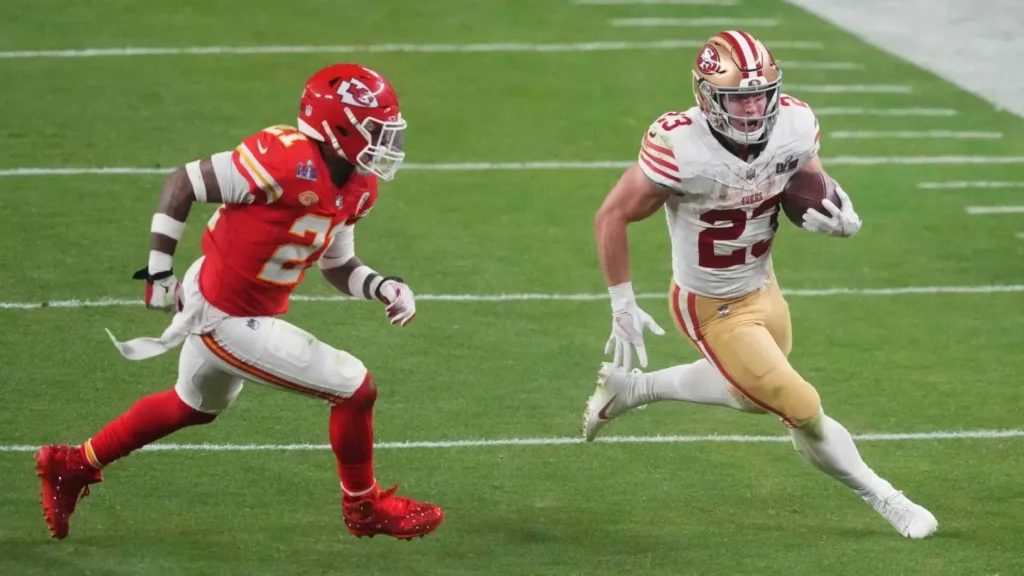Fantasy football is more than just a game—it’s a strategic challenge that combines your love for football with critical thinking and strategy. In fantasy football, you create and manage a virtual team composed of real NFL players. Your team’s success depends on the performance of these players in actual NFL games. The better your players perform, the more points you earn, and ultimately, the more likely you are to win your league.
Importance of Having Effective Strategies
To excel in fantasy football, having effective strategies is crucial. Without a solid plan, you risk making hasty decisions that can cost you wins. Strategic planning involves everything from drafting the right players to managing your lineup throughout the season. Effective strategies can help you navigate through the unpredictability of injuries, player performance fluctuations, and other variables, giving you a competitive edge in your league.
Understanding the Basics
Explanation of Fantasy Football Scoring Systems
Fantasy football scoring systems can vary widely, but they generally fall into a few categories. The most common scoring formats are Standard and PPR (Point Per Reception). In a Standard league, players earn points based on touchdowns, yards gained, and other key stats. In PPR leagues, players earn additional points for each reception, making wide receivers and pass-catching running backs more valuable. Understanding the scoring system of your league is essential, as it affects how you value different players and build your team.
Overview of Different League Formats
Fantasy football leagues come in various formats, each with unique rules and strategies. The most popular formats include:
- Standard Leagues: Traditional leagues with standard scoring rules.
- PPR Leagues: Scoring that rewards players for each reception, emphasizing pass-catching players.
- Dynasty Leagues: Long-term leagues where you keep most or all of your players from year to year, requiring a focus on both current performance and future potential.
- Keeper Leagues: Similar to Dynasty, but you keep a limited number of players from the previous season.
Understanding the format of your league helps tailor your strategy, from draft choices to in-season management, ensuring you make informed decisions to maximize your success.
3. Draft Strategies
Importance of Preparation and Research
Preparation and research are the cornerstones of a successful fantasy football draft. Before draft day, you should spend time studying player statistics, injury reports, and expert rankings. This preparation allows you to make informed decisions and adjust to any changes, such as last-minute injuries or trades. Creating a draft plan helps you anticipate your needs and stay focused, avoiding panic picks.
Best Practices for Drafting Top Players
When drafting top players, follow these best practices:
- Rank Players: Develop a list of top players based on your league’s scoring system and current performance metrics.
- Prioritize Positions: Focus on drafting key positions like running backs and wide receivers early, as they often contribute the most points.
- Stay Flexible: Be ready to adjust your strategy based on how the draft unfolds. Don’t be rigid about your plan; adapt to available players and avoid reaching for players too early.
- Balance Risk and Reward: Choose a mix of high-upside players and consistent performers to balance risk and stability.
Strategies for Different League Formats
- Standard Leagues: Focus on running backs and wide receivers who are likely to score touchdowns. Quarterbacks and tight ends should be drafted based on value and availability.
- PPR Leagues: Prioritize players who excel in catching passes, such as pass-catching running backs and high-target wide receivers. Tight ends who are involved in the passing game should also be considered early.
- Dynasty Leagues: Target young, high-potential players who can contribute for years to come. Balance your draft with current stars for immediate impact and future prospects for long-term success.

Player Rankings and Projections
How to Use Player Rankings to Your Advantage
Player rankings provide a structured way to evaluate potential picks. Use rankings to identify the best available talent and prioritize your draft picks accordingly. Compare rankings from multiple sources to get a consensus view and adjust based on your league’s specific scoring system. Regularly updating your rankings based on recent player performances and injuries ensures advent you are selecting the most valuable players.
Understanding Player Projections and Their Impact
Player projections offer estimates of future performance based on historical data, current trends, and upcoming matchups. Use these projections to gauge potential player output and make informed decisions during the draft and throughout the season. While projections are helpful, they are not foolproof. Always consider factors like player injuries, team changes, and game conditions that might influence actual performance. Combining projections with other research will give you a more comprehensive view of a player’s potential.
In-Season Management
How to Handle Injuries and Bye Weeks
Injuries and bye weeks are inevitable in fantasy football. To manage them effectively:
- Stay Updated: Monitor injury reports and player news regularly. This allows you to react quickly to changes and make necessary adjustments to your lineup.
- Use Bench Players Wisely: Ensure you have quality backups ready to step in when your starters are injured or on a bye week. Depth is key to surviving these challenges.
- Plan Ahead: Look at the NFL schedule to anticipate bye weeks and plan your roster changes in advance. If you have multiple players on bye weeks, consider streaming positions or making trades to fill gaps.
Tips for Making the Most Out of the Waiver Wire
The waiver wire is a crucial tool for improving your team:
- Be Proactive: Regularly check the waiver wire for emerging talent or players who have recently seen increased roles. Early action can give you a competitive edge.
- Prioritize Needs: Focus on adding players who address specific needs or weaknesses in your roster. Consider both immediate impact and long-term potential.
- Use FAAB Wisely: If your league uses Free Agent Acquisition Budget (FAAB), manage your budget strategically. Spend wisely to ensure you don’t run out of funds before critical pickups.
Importance of Trades and How to Make Them
Trades can significantly enhance your roster:
- Evaluate Needs: Assess your team’s strengths and weaknesses to identify what positions or players you need to target through trades.
- Research Trade Partners: Engage with other managers and propose trades that benefit both sides. Look for opportunities where you can offer depth in exchange for top talent.
- Negotiate Wisely: Be prepared to negotiate and make counteroffers. Sometimes, the initial trade proposal is just a starting point for getting a deal done.
Weekly Lineup Decisions
Strategies for Setting Your Lineup Each Week
To optimize your lineup each week:
- Review Matchups: Evaluate the matchups for each of your players. Start those facing weaker defenses and consider benching players up against strong opponents.
- Consider Player Trends: Look at recent performance trends and adjust your lineup accordingly. Players on hot streaks or with favorable conditions should be prioritized.
- Factor in Injuries and News: Stay informed about last-minute injury reports and player news. Adjust your lineup based on the latest information to avoid starting injured or inactive players.
Tools and Resources to Help with Lineup Decisions
Several tools can aid in making lineup decisions:
- Fantasy Football Apps: Use apps like ESPN Fantasy, Yahoo Fantasy, or Sleeper for real-time updates, player rankings, and lineup recommendations.
- Expert Rankings and Projections: Consult rankings and projections from trusted sources such as fantasy football analysts and websites to guide your decisions.
- Lineup Optimizers: Consider using lineup optimizers that analyze data and provide recommended starting lineups based on current player performance and matchups.
By effectively managing your roster, utilizing the waiver wire, making smart trades, and making informed weekly lineup decisions, you can enhance your chances of success in fantasy football.
Avoiding Common Mistakes
Typical Errors Fantasy Football Players Make
- Overvaluing Last Year’s Performance: Many players rely too heavily on last season’s stats, ignoring offseason changes and current performance trends.
- Ignoring Bye Weeks: Failing to plan for bye weeks can lead to starting players who are not available, costing you valuable points.
- Neglecting Injuries: Not staying updated on player injuries can result in starting inactive players, affecting your weekly score.
- Overreacting to Early Season Results: Panicking after a few bad weeks can lead to hasty trades or lineup changes that may not be beneficial in the long run.
How to Avoid These Pitfalls
- Stay Updated: Regularly review player news and adjust your roster accordingly. This helps you make informed decisions and avoid relying on outdated information.
- Plan for Bye Weeks: Anticipate bye weeks by looking at your league’s schedule and ensure you have backup options to cover these gaps.
- Use a Balanced Approach: Combine historical performance with current season data and trends. Don’t base decisions solely on past seasons.
- Don’t Panic: Maintain a long-term perspective. Make decisions based on a thorough evaluation rather than reacting impulsively to short-term results.
Advanced Strategies
Using Advanced Statistics and Analytics
- Leverage Advanced Metrics: Utilize stats like Target Share, Air Yards, and Yards Per Route Run to gain deeper insights into player performance beyond basic stats.
- Analyze Trends: Track performance trends, such as player consistency and usage patterns, to make more informed decisions about who to start or trade.
- Use Data-Driven Tools: Employ analytics tools and platforms that provide detailed player projections and matchup analysis to enhance your strategic decisions.
Exploring Draft Strategies Beyond the Basics
- Zero-RB Strategy: Consider drafting wide receivers and tight ends early while focusing on running backs later. This strategy can be effective in leagues with high-value pass catchers.
- Late-Round QB: Opt for a top-tier quarterback in the late rounds instead of early picks, allowing you to stock up on other positions early.
- Handcuffing: Draft backup players for your key starters (particularly running backs) to protect against injuries and maximize your roster’s depth.
By avoiding common mistakes and implementing advanced strategies, you can elevate your fantasy football game and increase your chances of dominating your league.

Staying Informed
How to Keep Up with Player News and Updates
- Follow Reliable Sources: Subscribe to reputable sports news websites and apps, such as ESPN, NFL Network, and Bleacher Report, for real-time updates on player injuries, trades, and performance news.
- Use Social Media: Follow NFL teams, beat reporters, and fantasy football experts on social media platforms like Twitter. They often provide timely updates and insider information.
- Set Alerts: Enable notifications on fantasy football apps and news services to get instant updates on player news that could affect your lineup decisions.
Importance of Following Expert Analysis and Trends
- Gain Insights: Expert analysis offers valuable insights into player performance trends, matchup strategies, and emerging talent that you might overlook.
- Stay Ahead of the Curve: Following trends helps you anticipate changes and adjust your strategy proactively. This can be crucial for making informed trades and waiver wire decisions.
- Improve Decision-Making: Expert opinions and analysis provide context to raw data, helping you make better-informed decisions about your roster and lineup.
Conclusion
To excel in fantasy football, integrate these key strategies:
- Preparation and Research: Plan your draft with thorough research and stay updated on player news.
- Drafting: Use smart draft strategies tailored to your league format and prioritize top performers.
- In-Season Management: Handle injuries, bye weeks, and make the most of the waiver wire and trades.
- Lineup Decisions: Set your lineup based on matchups, player trends, and available tools.
- Avoiding Mistakes: Be aware of common pitfalls and make decisions based on up-to-date information and balanced analysis.
- Advanced Strategies: Employ advanced statistics and unconventional draft strategies for a competitive edge.
Encouragement to Apply These Strategies for Success in Fantasy Football
Implementing these strategies can transform your fantasy football experience from average to exceptional. By staying informed, avoiding common mistakes, and leveraging advanced tactics, you’ll enhance your ability to make smart decisions and maximize your chances of success. Dive into the season with confidence and enjoy the thrill of fantasy football success!





